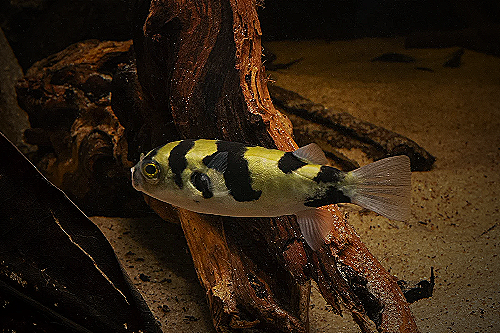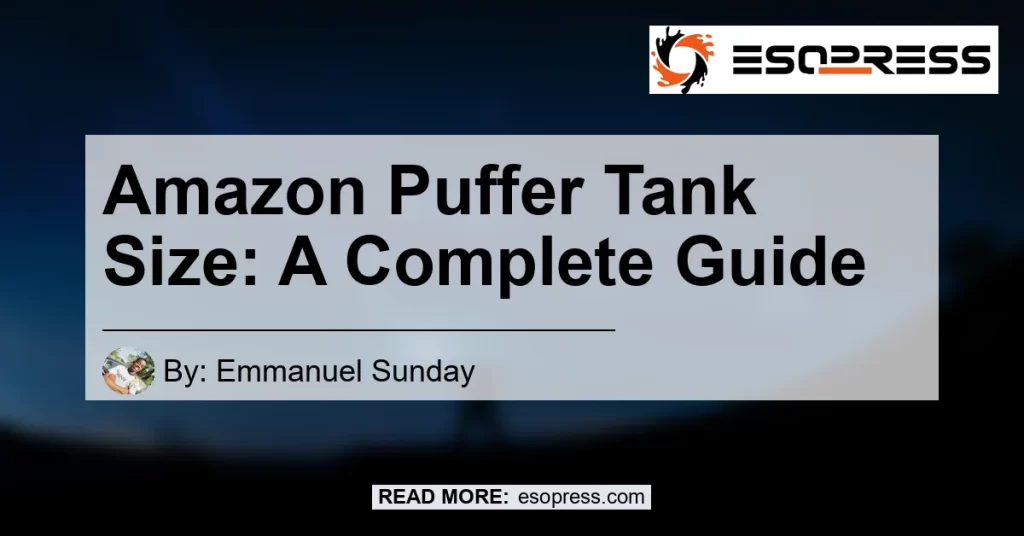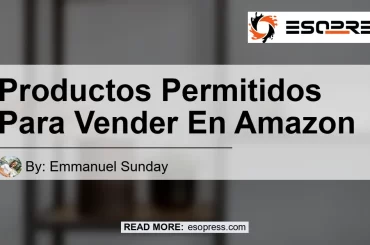


Welcome to the complete guide on the ideal tank size for Amazon puffers! If you’re an aquarium enthusiast or considering adding Amazon puffers to your aquatic collection, it’s essential to provide them with a comfortable and suitable environment.
Amazon puffers, known for their distinctive appearance and unique defensive mechanism of puffing up their bodies, are freshwater fish native to South America. These carnivorous creatures feed on mollusks, worms, and frozen foods. In this guide, we will discuss the recommended tank size for Amazon puffers, their habitat, and other important factors to consider. So, let’s dive in and ensure your Amazon puffers thrive in their aquatic home!
Contents
The Ideal Tank Size for Amazon Puffers: Minimum Requirements
When it comes to choosing the appropriate tank size for Amazon puffers, it’s crucial to consider their natural habitat and behavior. Amazon puffers are active swimmers, and providing them with enough space is essential for their well-being. While they are small in size, their need for swimming space should not be underestimated.
Based on expert recommendations, the minimum tank size for Amazon puffers should be at least 30 gallons. This size provides them with adequate swimming space and ensures they have enough room to roam and exhibit their natural behaviors. However, if space permits, a 55-gallon tank or larger would be even better, allowing for a more comfortable environment for these energetic fish.
It’s important to note that Amazon puffers are social creatures and fare better when kept in groups. The minimum recommended group size is six puffers. To accommodate a group of six Amazon puffers, it is recommended to have a tank that is at least 200 liters or 52.83 US gallons in size. This size allows each puffer to establish its territory and promotes a healthier social dynamic within the group.
Amazon Puffers’ Habitat and Tank Setup
To create an optimal environment for your Amazon puffers, it’s essential to replicate their natural habitat as closely as possible. Amazon puffers originate from the wilds of Peru, specifically the Rio Napo region. The tank setup should mimic the conditions found in their natural habitat to promote their overall well-being.
Here are some key components to consider when setting up the tank for your Amazon puffers:
Substrate
Choose a sandy substrate for the tank bottom to closely resemble the riverbeds found in the Amazon basin. This substrate allows the puffers to engage in their natural foraging behavior, as they sift through the sand in search of food.
Filtration
A quality filtration system is essential to maintain a clean and healthy tank environment for your Amazon puffers. Puffers are known to produce more waste compared to other fish species, so investing in a reliable filtration system will help keep the water parameters stable and prevent ammonia build-up.
Plants and Decorations
Adding live plants and various decorations, such as driftwood and rocks, creates a visually appealing and stimulating environment for your Amazon puffers. Dense vegetation provides hiding spots and gives them a sense of security. Additionally, floating plants help diffuse lighting and create shaded areas within the tank, allowing the puffers to retreat when needed.
Water Parameters
Amazon puffers prefer slightly acidic water conditions with a pH range of 6.8 to 7.4. The water temperature should ideally be maintained between 75°F to 82°F (24°C to 28°C). Regular water testing and appropriate adjustments should be done to maintain optimal parameters for your puffers’ health and well-being.
Recommended Products for an Amazon Puffer Tank
While setting up your Amazon puffer tank, there are various products and equipment that can enhance the overall experience and well-being of your fish. Here are some recommended products to consider:
-
Marineland Penguin Power Filter – A reliable power filter system that provides efficient mechanical and chemical filtration, ensuring pristine water conditions for your Amazon puffers.
-
NICREW ClassicLED Aquarium Light – This LED light fixture simulates natural daylight, showcasing the vibrant colors of your Amazon puffers and promoting healthy plant growth.
-
Seachem Prime Fresh and Saltwater Conditioner – A water conditioner that detoxifies ammonia, nitrite, and nitrate, providing a safe and healthy environment for your Amazon puffers.
-
API Aquarium Test Kit – This comprehensive test kit allows you to monitor essential water parameters, ensuring the optimal conditions for your Amazon puffer tank.
-
Fluval E Electronic Heater – A reliable aquarium heater that ensures a consistent water temperature within the recommended range for Amazon puffers.
Conclusion
In conclusion, providing an adequate tank size is crucial to ensure the health and well-being of your Amazon puffers. A minimum tank size of 30 gallons is recommended, but a larger tank, such as a 55-gallon or more, will allow these active swimmers to thrive even more. Additionally, it’s important to remember that Amazon puffers are social creatures and should be kept in groups of at least six.
Creating a suitable habitat for your Amazon puffers involves replicating their natural environment with sandy substrate, appropriate filtration, live plants, and decorations. Monitoring and maintaining the water parameters to match their preferences will contribute to their overall health and vitality.
To enhance the overall experience and well-being of your Amazon puffers, consider investing in recommended products such as a reliable filtration system, LED lighting, water conditioner, test kit, and an aquarium heater.
As a final recommendation, we believe the Marineland Penguin Power Filter stands out as the best product for your Amazon puffer tank. Its efficient filtration capabilities and durability make it an excellent choice to maintain optimal water conditions and provide a healthy living environment for your Amazon puffers.


Remember, the well-being of your Amazon puffers should always be a top priority. By providing a suitable tank size and replicating their natural habitat, you’ll create a thriving and visually stunning aquarium that you can enjoy for years to come. Happy fishkeeping!
Disclaimer: The links provided in this article are Amazon affiliate links. As an Amazon Associate, I earn from qualifying purchases.














